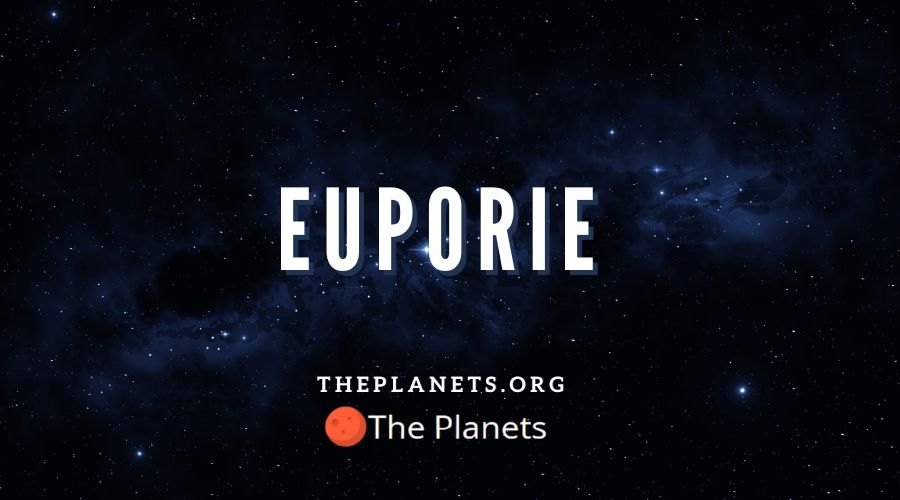
The Discovery Of Euporie
The moon Euporie was discovered on December 11, 2001 by a team of astronomers that included: Scott S. Sheppard, David C. Jewitt and Jan T. Kleyna. The moon was first discovered by this group at the Mauna Kea Observatory in Hawaii. Until it was given its proper name, Euporie was simply referred to as S/2001 J 10.
The Origins Of Euporie
Euporie is one of 15 moons in the Ananke group. These moons are thought to have all originated from one asteroid, rather than being part of the original formation of the Jupiter system. The largest piece of the probable original asteroid is Ananke, the largest natural satellite in this group.
The similar characteristics of the moons in this group suggest that they all came from one asteroid. For instance, they are all have retrograde orbits. The moons in this group also all have eccentric orbits. They are also all irregular in shape.
The moons in the Ananke group are made of rocks and minerals characteristic of the matter that comprises many asteroids. They share similar material and coloration, which suggests that they originated from one original asteroid.
The Naming Of Euporie
The moon Euporie was originally called S/2001 J10. The name Euporie comes from Roman mythology. She was one of daughters of the Roman god Jupiter, and also one of the ‘Horae,’ or the seasons. Euporie’s mother, in Roman mythology, is a Titaness woman by the name of Themis. Ironically, since Euporie is a very small moon in comparison to many of Jupiter’s other moons, the name means “plenty.”
The name was also chosen by the International Astronomical Union because it ends in E. The IAU has a policy which requires all outer moons that are retrograde to have names that end in E.
Characteristics Of Euporie
All of the moons in the Ananke group have retrograde orbital paths. The moons in this group are also all of eccentric orbital shape. This means that their orbits are elliptical rather than spherical. All of the Ananke moons are also irregular in shape. This is because they are all too small to pull themselves into a more spherical shape.
The moons in this group are also all highly inclined in comparison to the equatorial plane of their parent planet.
Statistics On Euporie
Euporie is one of Jupiter’s tiniest moons! It has a mean radius of only around 0.6 miles, or one kilometer. As a size comparison, Euporie is 6371 times smaller than the Planet Earth. It has a mass of 14,986,684,330,972 kilometers.
This little moon is situated at a mean distance of 11.9 million miles from her parent planet, or around 19.3 million kilometers. It takes Euporie 551 days to completely orbit the planet Jupiter.